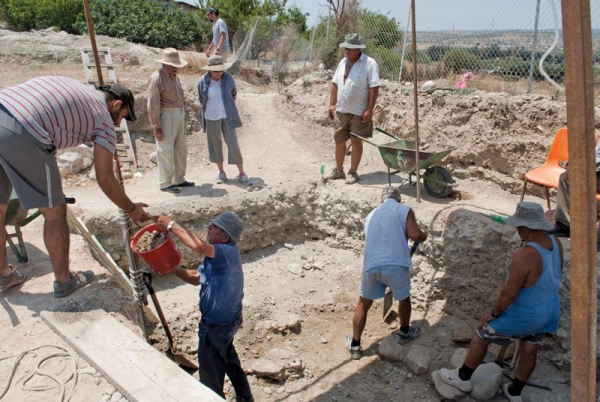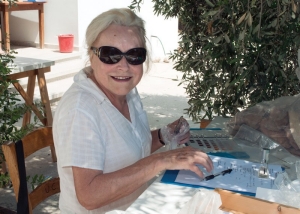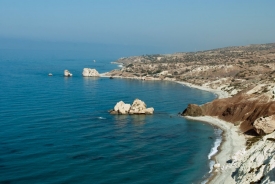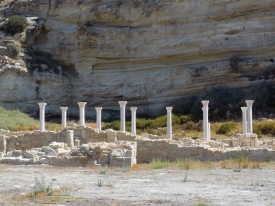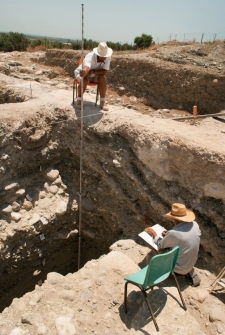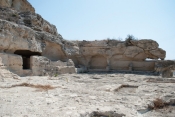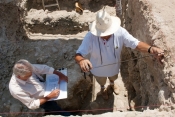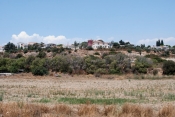Eleven-year Cyprus excavation brings professor Gisela Walberg and UC international recognition
by Dawn Fuller
photos by Lisa Britton
When the Cyprus Department of Antiquities wanted a respected archaeologist to conduct excavations of a probable trading center that flourished from the 13th through 11th centuries B.C., they sought out University of Cincinnati professor Gisela Walberg. It's no surprise that heads turned toward UC to find such expertise since scholars consider the UC Classics Department to be one of the best in the country.
Walberg, who specializes in the prehistory of Greece and Cyprus, began her excavations in 2001 at Episkopi-Bamboula, which is situated on a plateau not far from the Mediterranean Sea. Researchers think that this bustling urban center was a cultural melting pot for the Middle East, Egypt and Turkey in the Late Bronze and Iron ages.
At the time Walberg started sifting through the ruins there, archaeologists had not closely studied the area for 50 years. On her 2010 expedition, discovering a wall more than 15 feet thick was part of the research that has brought her 48-year career international recognition.
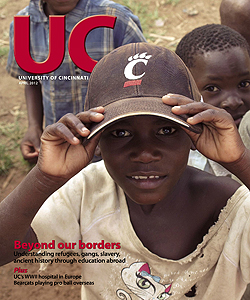
 Past Issues
Past Issues